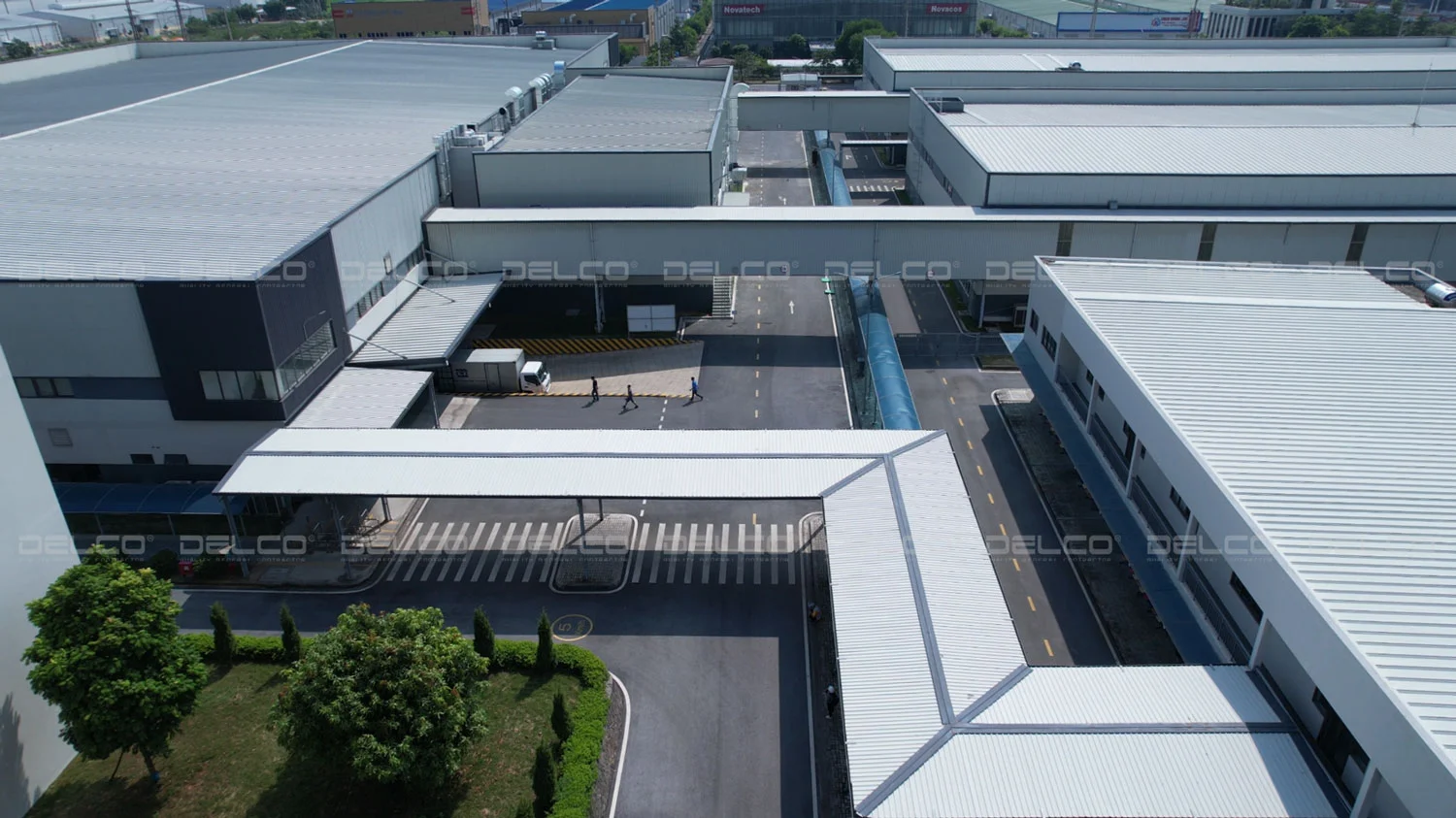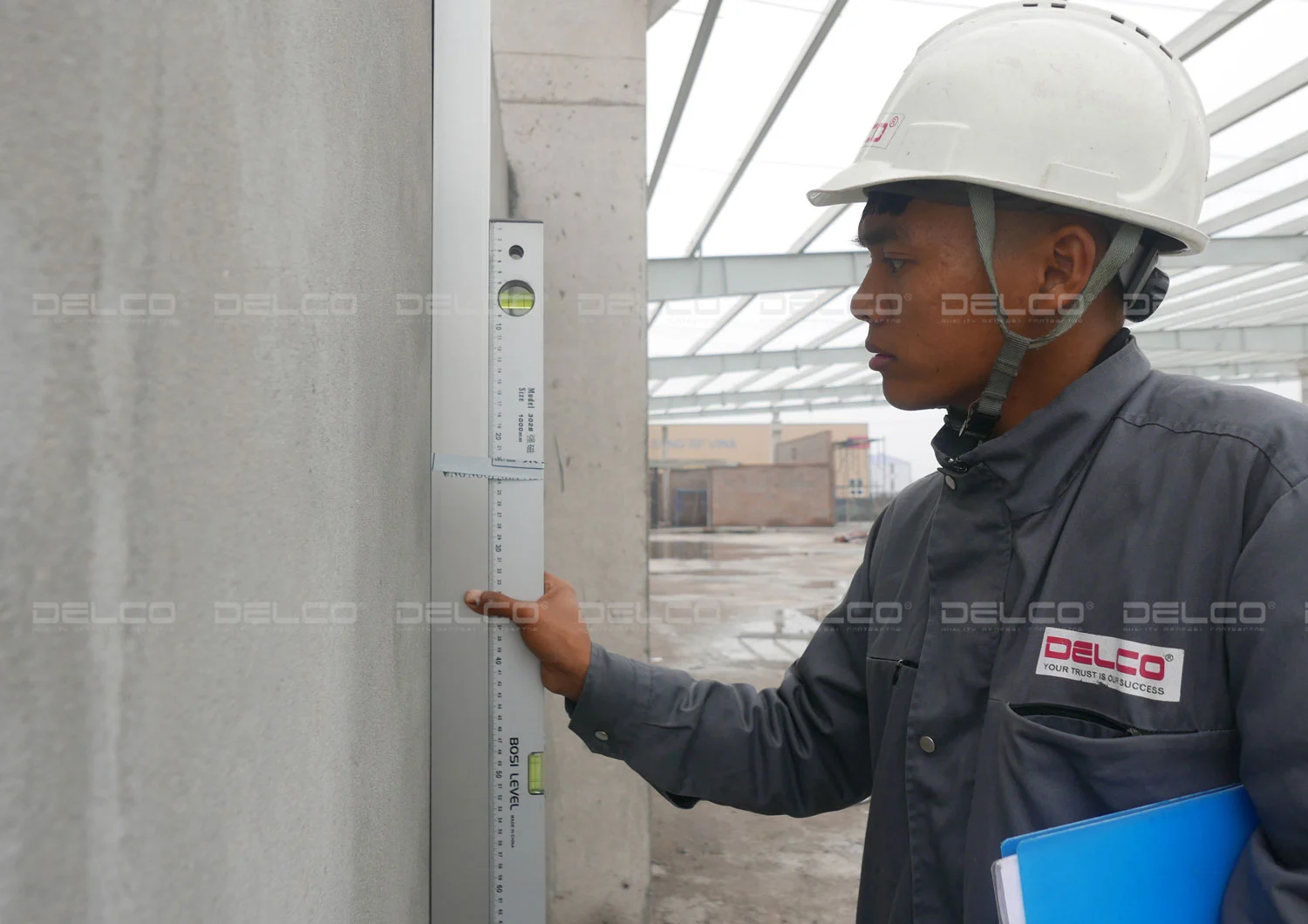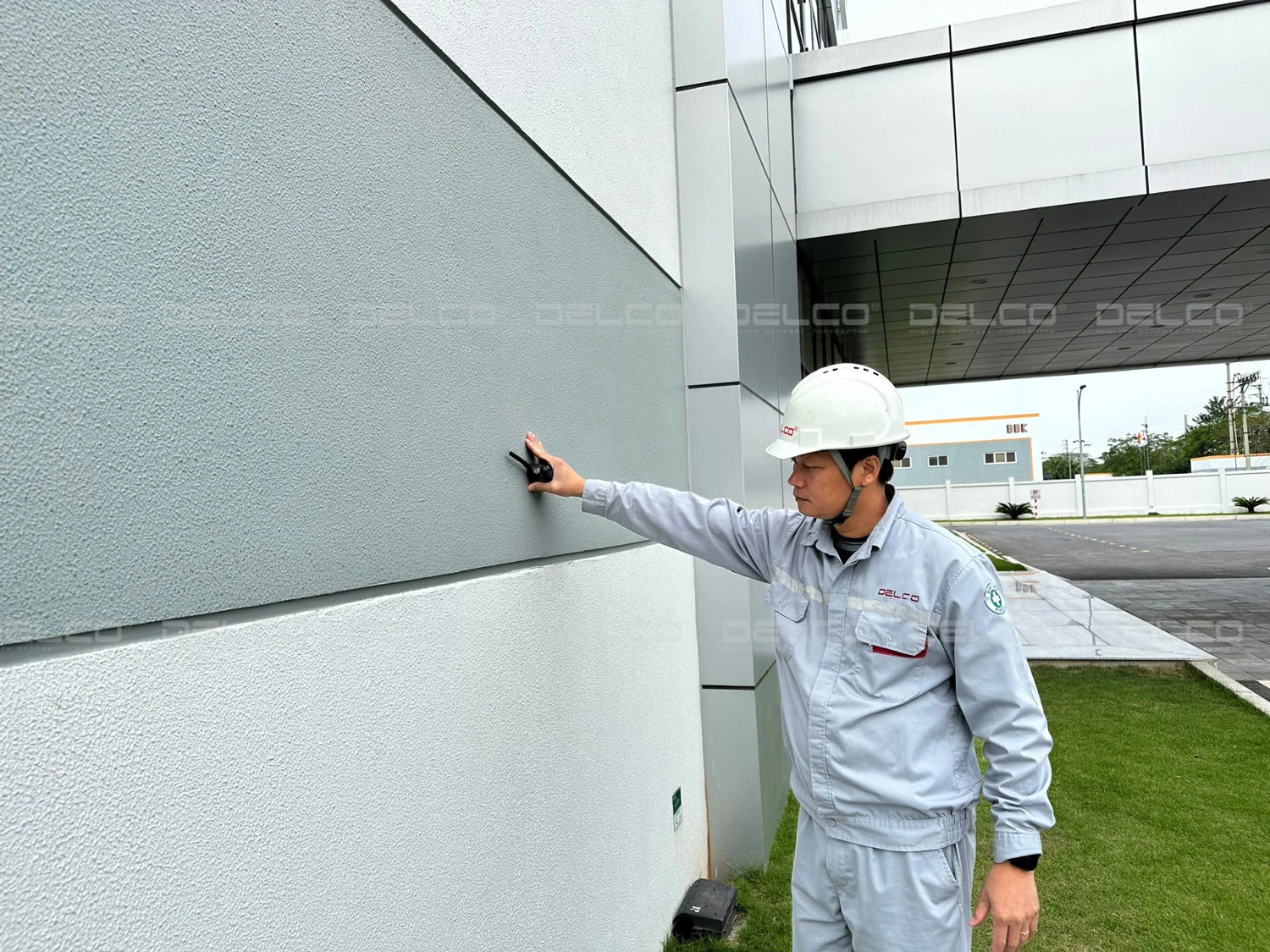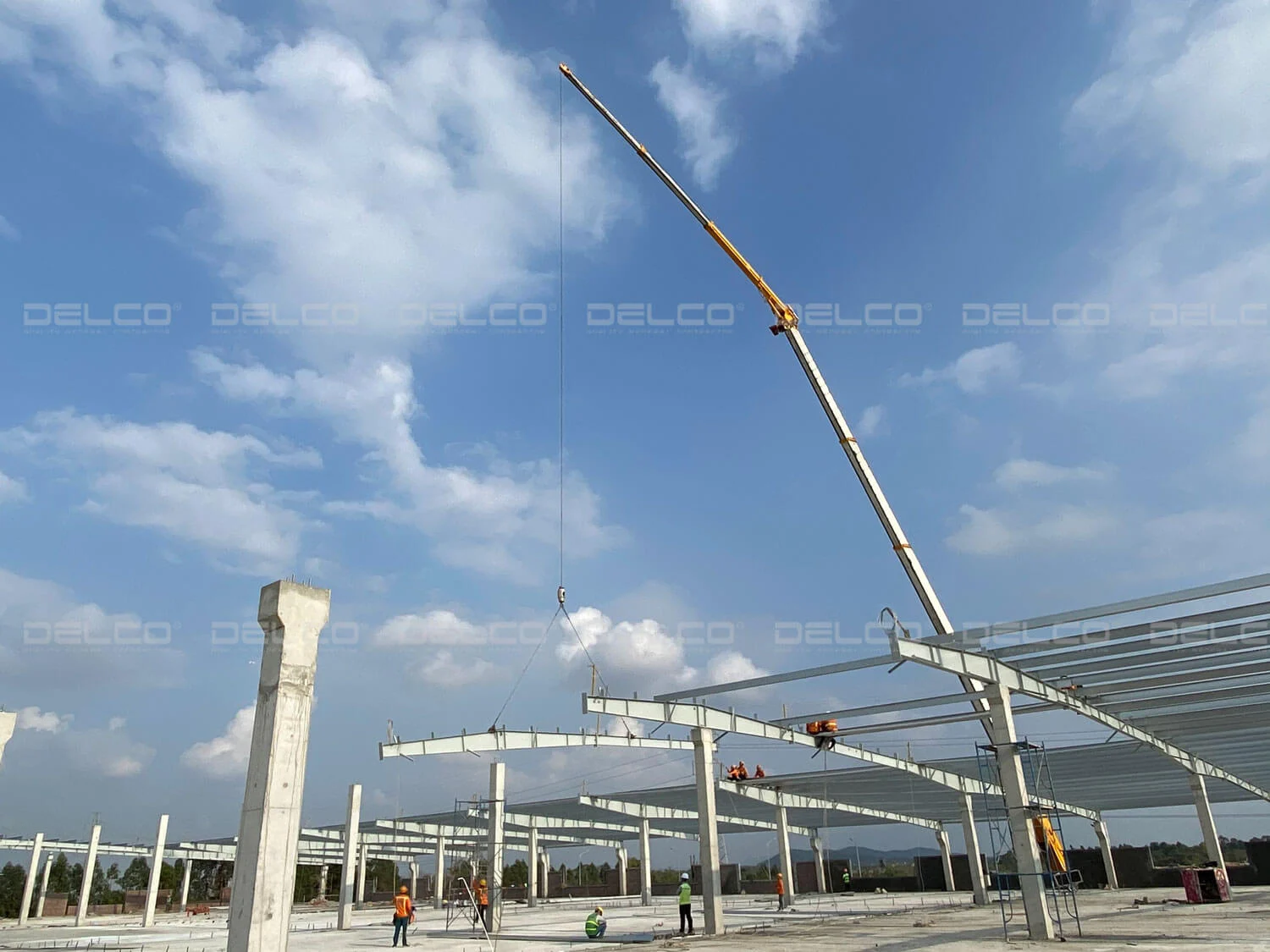The currently applied clean room standards in Vietnam are TCVN 8664 and ISO 14644. Especially in the pharmaceutical, product manufacturing and processing industries where safe and hygienic conditions are strictly required, complying with GMP standards is a must.
What is a clean room?
A clean room is an enclosed area with the density of airborne particles strictly controlled according to prescribed parameters; Other factors such as temperature, humidity and pressure are also controlled and maintained at appropriate levels depending on the production field of each business.
Currently, clean rooms are applied in many industrial fields and are mandatory in the pharmaceutical, food, and biotechnology industries, etc., where the control of airborne particle concentration during product manufacturing is highly required.
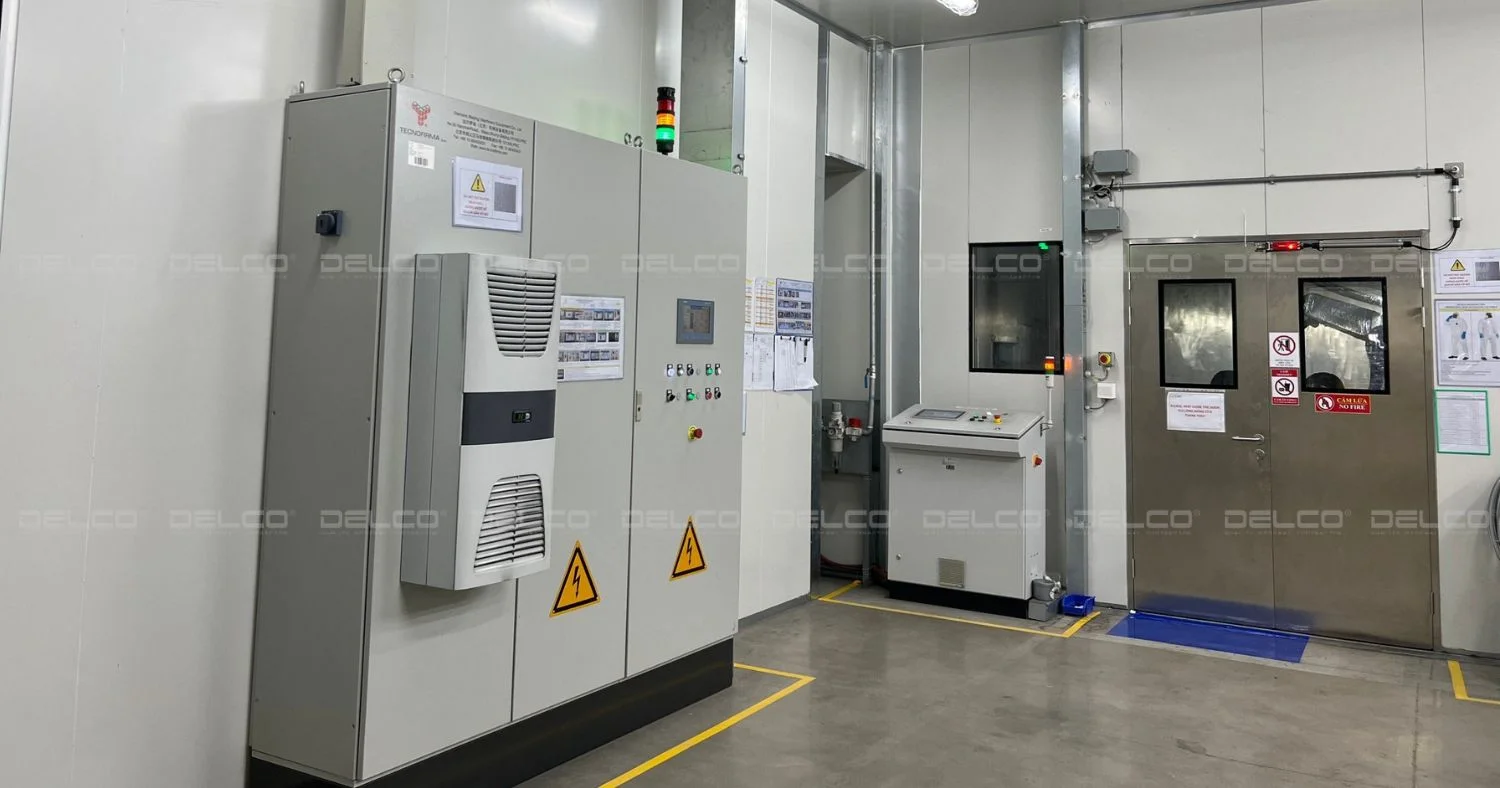
Clean room at DAINESE factory with DELCO as the MEP Design – Construction General Contractor
Clean room standards applied in Vietnam
TCVN 8664:2011, ISO 14644, FED-STD-209E are popular clean room standards in Vietnam and are attractive to many investors. Particularly for the pharmaceutical industry, businesses are required to comply with GMP standards.
Clean room standards TCVN 8664:2011 and ISO 14644
Clean room standards TCVN 844:2011 and ISO 14644 are two official standards of Vietnam with the same content and regulations. The standard classifies clean rooms into 9 levels based on particle concentration in 1m³ of air, in which level 1 is the highest and level 9 is the lowest. Below is a table specifying particle limits according to standards TCVN 8664-1:2011 and ISO 14644-1.
| Clean level | Maximum allowable concentration (particles/m³ of air) | |||||
| 0,1µm | 0,2µm | 0,3µm | 0,5µm | 1µm | 5µm | |
| ISO 1 | 10 | 2 | ||||
| ISO 2 | 100 | 24 | 10 | 4 | ||
| ISO 3 | 1000 | 237 | 102 | 35 | 8 | |
| ISO 4 | 10 000 | 2 370 | 1 020 | 352 | 83 | |
| ISO 5 | 100 000 | 23 700 | 10 200 | 3 520 | 832 | 29 |
| ISO 6 | 1 000 000 | 237 000 | 102 000 | 35 200 | 8 320 | 293 |
| ISO 7 | 352 000 | 83 200 | 2 930 | |||
| ISO 8 | 3 520 000 | 832 000 | 29 300 | |||
| ISO 9 | 35 200 000 | 8 320 000 | 293 000 | |||
Clean room standard FED-STD-209E
FED-STD-209E, which is a clean room standard issued by the US Department of Commerce, is implemented by foreign investors. According to FED-STD-209E standards, clean rooms are classified into levels from 1-100,000 with cleanliness decreasing based on the number of particles in 1m³ of air.
| Clean level | Maximum allowable concentration (particles/m³ of air) | ||||
| 0,1µm | 0,2µm | 0,3µm | 0,5µm | 5µm | |
| Clean room Class 1 | 1 240 | 265 | 106 | 35,3 | |
| Clean room Class 10 | 12 400 | 2 650 | 1 060 | 353 | |
| Clean room Class 100 | 26 500 | 10 600 | 3 530 | ||
| Clean room Class 1000 | 35 300 | 247 | |||
| Clean room Class 10 000 | 353 000 | 2 470 | |||
| Clean room Class 100 000 | 3 530 000 | 24 700 | |||
GMP clean room standards
In Vietnam, GMP is a mandatory standard applied to production and product processing fields with high requirements for food hygiene and safety conditions such as the pharmaceutical, food, medical equipment, and cosmetics industries.
GMP clean room standards are classified into 4 clean levels A, B, C, D depending on the maximum allowable number of particles specified in the table below.
| Maximum allowable particles (particles /m³) | ||||
| Resting | Operating | |||
| Clean level | 0,5µm | 5µm | 0,5µm | 5µm |
| A | 3 520 | 20 | 3 520 | 20 |
| B | 3 520 | 29 | 352 000 | 2 900 |
| C | 352 000 | 2 900 | 3 520 000 | 29 000 |
| D | 3 520 000 | 29 000 | No regulation | No regulation |
In addition, GMP also provides specific clean room regulations including the air change rates as well as appropriate temperature and humidity for each clean room level. According to GMP standards, clean room levels have temperatures below 25 degrees Celsius and humidity below 70%.
| Level | Air change rate | Temperature | Humidity |
| A | 60 times | <25 ℃ | <70% |
| B | 40 times | <25 ℃ | <70% |
| C | 30 times | <25 ℃ | <70% |
| D | 20 times | <25 ℃ | <70% |
Notes when constructing clean rooms
To meet clean room standards, the contractor needs to follow the correct clean room construction process to ensure that the ceiling, and floor are smooth with good waterproofing, and are closely constructed. Clean room construction materials must be anti-dust such as panels, aluminum accessories, powder-coated steel, color-coated steel, etc.
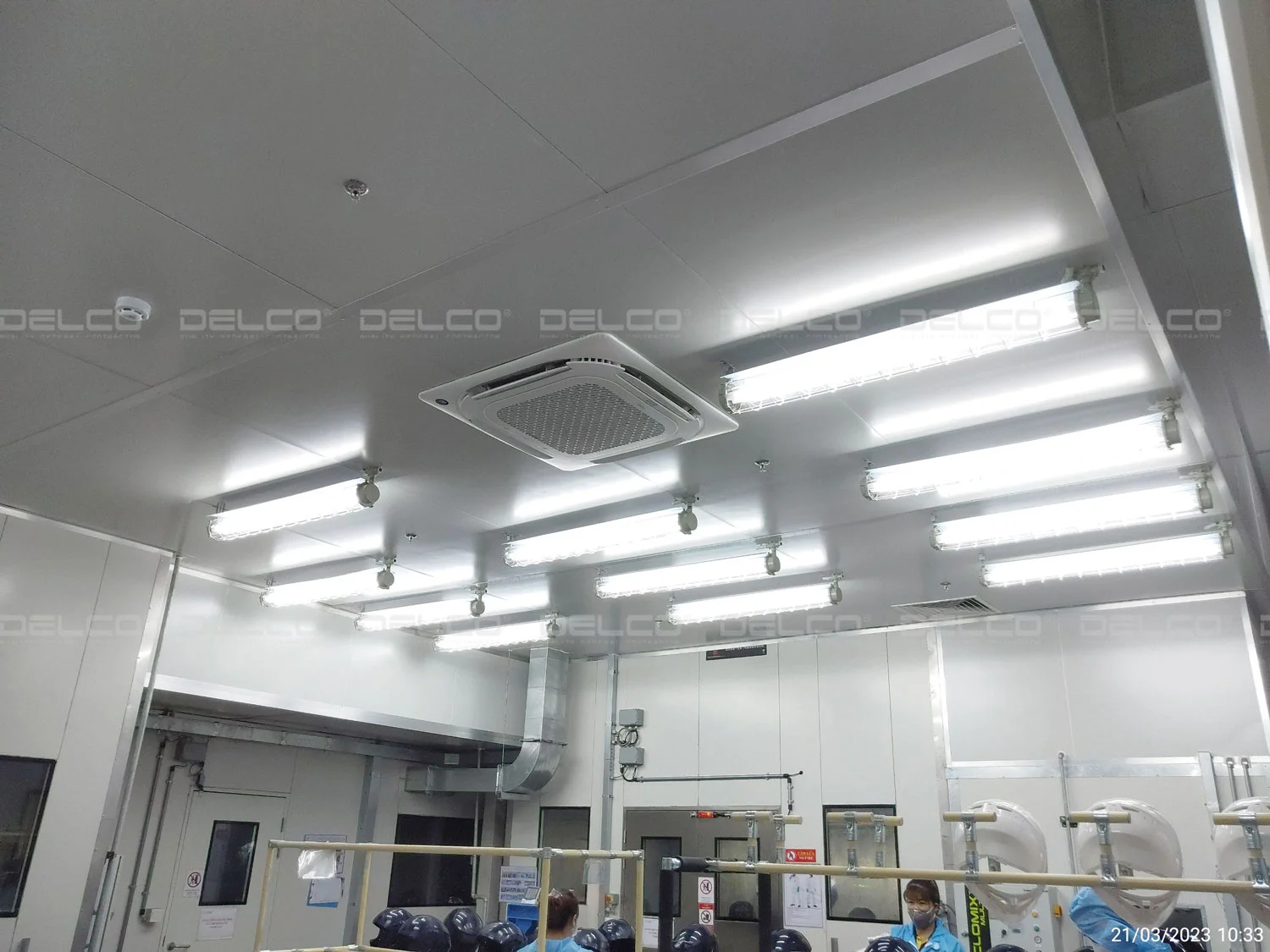
Using panel ceilings and walls in the clean room of the protective equipment factory with DELCO as the MEP Design – Construction General Contractor
For air pipe systems, dust accumulation in the pipes must be minimized from production, transportation to installation. Gas pipes must be manufactured in a dust-free room. After production, the inside and outside surfaces of the pipe must be cleaned and both ends must be sealed to avoid contamination during transportation. Gas pipe sections must be covered immediately after installation. Once the air pipe system has been completely installed, the pipes and room must be cleaned with a coarse filter then next with a HEPA filter.
The clean room needs to be cleaned again after the system has operated for 12 hours before installing HEPA. After completing the installation of the air treatment system, businesses need to control the pressure difference between the clean room and the outside, ensuring it is greater than 10Pa.
Clean room maintenance
To ensure clean rooms always meet standards, businesses should inspect and maintain them every 6 months for ISO 1-5 clean rooms and once a year for ISO 6-9 clean rooms. In addition, for clean rooms of levels >ISO 5, businesses need to check the number of particles in the clean room every 12 months, the air pressure difference and the airflow of all clean room levels every 12 months according to ISO 14644 standards.
See more: Vinyl flooring – a safe anti-static material for the working environment
See more: Popular industrial flooring solutions


